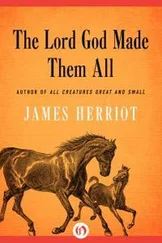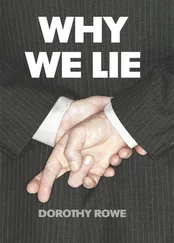And then in quick succession, some distance inside the inner wall, the diggers at Trench A came up with three finds, none so spectacular as the remnants of the castle but all of a nature that sent the history of Makor rocketing backwards, so that after these items were appraised by the scholars the balance between the trenches was restored, and the hidden secrets of the mound began to unfold in an orderly pattern. The first find was merely a piece of limestone intricately carved in a manner no Jew or Christian would adopt; it was obviously of Muslim origin, a poetic decoration for a mosque—but on its face some later Christian hand had imposed a panel with five crosses.
The experts now focused on Trench A, where a picture of chronological confusion developed, indicated by interrupted building lines and broken foundations. The Muslim stone proved that either a mosque or part of a building used as a mosque had once stood in this area, but that later Christians had converted it into a church. However, as the diggers probed deeper, it became clear that the significant building had been a great Byzantine basilica with a mosaic floor, and Cullinane dug with increasing excitement, hoping to uncover some kind of substantial proof that Makor had owned one of the early Christian churches of the Galilee; but it was Tabari who finally brushed away a pile of dust to reveal a handsome stone on which had been carved a set of three crosses in bas-relief.
When he climbed out of the trench, Eliav went down with the photographer for a series of shots of the stone in situ, for it was essential to record where it had stood and how it had fitted into the wall, especially since the stone was lodged in a section which seemed to have been built and rebuilt several times: whether it had formed part of the mosque could not now be determined; only later excavation would establish the relationships. But as Eliav brushed away some earth so that the camera could catch a shadow showing how the rock abutted onto those above and below, some irregularity on the upper surface of the stone caught his practiced eye and he asked for a small pick and a brush. With these implements he dislodged the dust, sixteen hundred years old, that had sifted in between stones, and he satisfied himself that he had come upon something of great moment. Without speaking, he made way for the photographer, and walked slowly over to where Cullinane was showing his sketch to Vered Bar-El and Tabari. Taking the card, Eliav said quietly, “I’m afraid you’ve some more work to do on this one, John.”
“What do you mean?”
Eliav looked soberly at his colleagues. “The kind of thing we dream about,” he said.
The other three experts lined up behind him as he led the way back to the trench. No one spoke, but at the newly found stone Cullinane asked the photographer to retire, then fell on his hands and knees to peer into the dusty space a quarter of an inch high. When he rose his eyes were alight, and Dr. Bar-El and Tabari, when they saw what Eliav had partially uncovered, reacted in the same way.
“I want the draftsman down here right away,” Cullinane called. There were only a few hours of good light left, and he directed her to sketch from all angles the Christian rock with its stalwart crosses. At the same time the photographer was directed to shoot the rock lavishly, after which they would pull out the stone to inspect the hidden face; but in spite of the urgency that communicated itself throughout the dig, it became apparent that the remaining hours of that day would have to be spent in drawing. Any further work on the rock must wait till next morning.
“We could do it under lights,” Tabari suggested, but this Eliav quickly vetoed, and as darkness fell a sense of deep excitement settled over Makor.
At dinner the older kibbutzniks were as pleased as the youngsters who worked at the dig, partly because every family in Israel had at least one amateur archaeologist—rare was the house that had no flints, no pottery, no echoes of the past—and partly because everyone in the kibbutz thought of the work as “his dig.” “I hear we hit something big today,” one of the serving men said to Cullinane. The Irishman’s eyes were too bright for him to deny his excitement.
“We found the cornerstone of a Christian church,” Cullinane replied. “Great day for the Irish.”
“But that running around at the end?” the man asked. “What was it about?” He propped his tray on the table, leaning on it as if he were the owner of a restaurant.
“We don’t know,” Cullinane said.
“Can’t you guess?” the kibbutznik demanded.
“We’ll guess tomorrow,” Cullinane replied. He was becoming irritated with this man.
But the young fellow said, “Could we come up and watch?” and Cullinane became aware that eight or nine of the kitchen staff had crowded about his chair, eager to know what was happening on their tell.
“All right,” Cullinane said. “Be there at six.” And as day started, more than a hundred persons lined the trench, watching silently as the four senior archaeologists descended to work on the Christian stone. “You have enough photographs?” Cullinane asked the English cameraman.
“Developed them last night. All okay.”
“You have enough sketches?” The young woman nodded, so Tabari began working cautiously along the edges of the rock, but it could not be moved.
“We’ll have to take out those layers on top,” Eliav suggested, and to do this required the better part of an hour. None of the watchers left.
The important stone now stood with only one large rock bearing down upon it, and Cullinane called the photographer in for a final series of shots, after which he and Eliav began to lift the obstructing stone with crowbars. Slowly they raised the ancient burden until Tabari, peering into the dusty darkness, could see the surface about to be exposed. “It’s there!” he shouted, and Dr. Bar-El, looking over his shoulder, whispered, “My God! It’s perfect.”
They took away the cover stone, then brushed the dust from the long-hidden surface to display the carving of a little flat wagon with funny flat-sided wheels bearing a house with a curved roof, guarded by palm trees. The archaeologists stood back so that the kibbutzniks could see the treasure, but no one spoke.
Finally Eliav said, “It’s a great day for the Jews,” for this was a folklore representation of the flat wagon bearing the wooden Ark of the Covenant in which the tablets of the Ten Commandments were supposed to have been carried from Mount Sinai to the Promised Land. Originally this stone must have enjoyed a place of honor in the synagogue of Makor, but when that structure was torn down by the victorious Christians, some workman had carved his three crosses on a different face, while the vanquished Jewish side was cemented into the darkness of the basilica. To have the Jewish symbols exposed now, before Jews who had returned from exile to build their kibbutz near the ancient site, constituted a luminous moment; and Dr. Cullinane, happening to look up from the trench, saw that some of the older kibbutzniks had tears in their eyes. With deep pleasure he modified his earlier drawing and filed it.
Almost before he was finished, a workman found a coin that completed the violent sequence of that period: Roman temple, synagogue, basilica, mosque, church … all equally collapsed into a shared destruction.
Cullinane allowed the stone and the coin to be exhibited at the kibbutz for some days, and grave-faced Jews stood before them looking first at their long-buried ark but staring mostly at the hard face of Vespasian, whose armies had destroyed their temple, and at the figure of Judaea Capta as she mourned in humiliation under the palm tree. It was one of the most beautiful coins ever issued, this flawless union of imperial force and tribute sorrow, and it fascinated the modern Jews whose history it summarized. Cullinane, himself deeply affected by the three emotionally related finds, cabled Paul Zodman:
Читать дальше

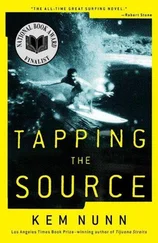


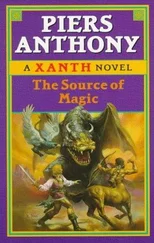
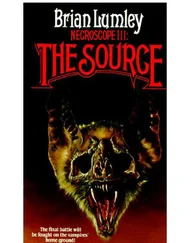
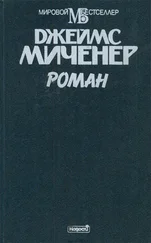

![Джеймс Купер - Пионеры, или У истоков Саскуиханны [The Pioneers, or The sources of the Susquehannah]](/books/395797/dzhejms-kuper-pionery-ili-u-istokov-saskuihanny-t-thumb.webp)
